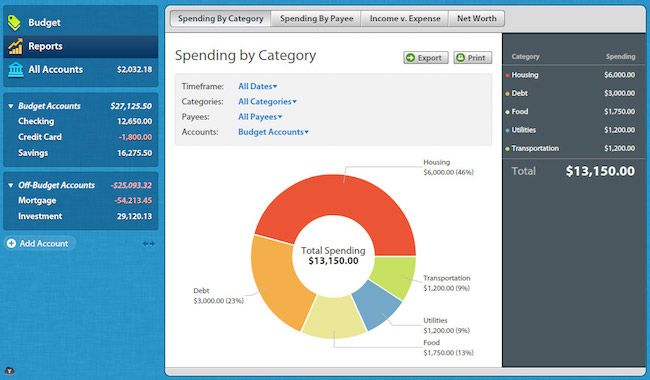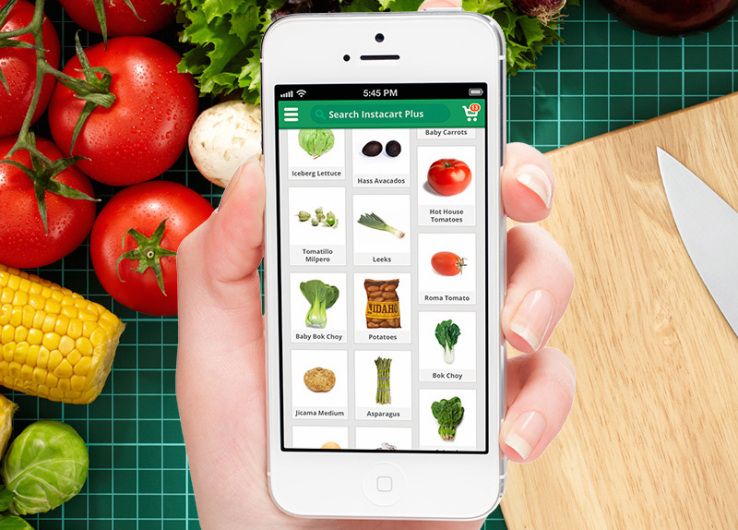Money doesn’t grow on trees, you know! How many times have we heard those words coming out of our parents’ mouths, and now these days, coming out of own mouths when talking to our kids about spending? Funny how that happens, right?
But the lesson behind the old saying is an important one: Be careful how you spend your money; there’s a limited supply. And it’s why creating a budget — and sticking to — is so important.
We’ve partnered with You Need a Budget (clever name, right?), which is a cool little mom-and-pop company we like because they were started by two smart parents, including one successful former CPA, who figured out a really clever method for making finances work better for themselves while trying to budget for their own five kids.

In fact, while they do offer a free 34-day trial, even if you don’t download it, we like that they encourage you to just browse the site for lots of helpful tips that they put out there to help more families.
So on their behalf we’re bringing you 9 smart tips for creating a budget and making sure you can work with it. We really hope we can help some more of you gain more control of your money and get together a savings plan that works. Especially with the holidays coming up so quickly — yikes!
1. Set a big-picture goal
Maybe it’s finally checking that cross-country family road trip off your bucket list, or building a nest egg to start your own business, or buying your dream house. Or perhaps it’s something not quite as glamorous, but still hugely important like paying off your credit card debt or student loans. (By the way, according the latest Federal reserve stats, the average credit card debt in this country is more than $15,000; with student loan debt an average of nearly $33,000. Yikes.) However when you set that one big, long-term goal, it not only helps you focus on why you should create budget but inspires you to make every effort to stick to it.

2. Set short-term goals, too
Big goals are key, but it’s not the only reason to budget. It’s also smart to break things down to smaller, bite-sized goals that you’ll want to meet too. For example, say you have your Big Picture Goal of opening a bed and breakfast in Vermont. (Hey, why not?) You may also have smaller goals like being able to afford a second after-school class for the kids in January, planning a first birthday party, or being sure you have a monthly family entertainment budget so you can all get to the movies once every couple of months. Sometimes meeting those smaller goals on the way to the big one can be incredibly satisfying; we all need little wins to keep us motivated.
3. Write your goals on the wall. Not kidding.
We think it’s really smart to take your goals and literally write them up where you can stare at them all the time for a little encouragement to stay the course. If you’re budgeting for a big adults-only, print out an amazing travel photo of the destination and tuck it into the corner of your bathroom mirror. (It could help you get bikini ready too, ha.) If you’re planning for down payment on a home, draw your own little home illustration on a sticky note, then post it on the top of your computer or on your laptop sleeve. Or use the chalkboard in the kitchen to write down a big family adventure you’re all hoping to share, and inspire the whole crew.
Or heck, just go into a program like Canva or PicMonkey like we did and create your own quote that will inspire you, like we did here. Print it out and keep it in your wallet, on your nightstand in a little frame — wherever you think it will motivate you best.

It seems like a small idea, but it’s a great way to remind yourself maybe you don’t need to buy those boots, even if they want on sale. Or a “we’re going to Disneyland!” note in your lunchbox for work is a great reminder to stick with the office kitchen coffee instead of indulging on the $5 lattes — and hey, maybe a good incentive to keep you going when you’re stuck on a tireless freelance project and not making it home for dinner.
Hey, in the Harvard Business Review, no less, there are even studies to support the persuasive power of a simple Post-It note.
4. Use exact numbers in your budget
This may sound like a duh, but don’t scribble down estimates in your budget. Be sure to collect specific, real data in your budget — there’s a difference between “$100-ish a month for cable bill” and “$129/month.” So figure out exactly much your take-home pay is and the exact number you spend every month on fixed expenses.
A smart trick to approach this is, before building your budget, take two months (or go back two to three months) to really track every expense and income fluctuations so you’re working with real accurate numbers.
5. Don’t forget the little things
Fixed expenses are easy to track, but it’s often the little fluctuating expenditures that can slip through the cracks and go unaccounted for. Be sure to consider things like school lunches, birthday gifts for your kids’ friends, team sports fees and uniforms, parking meters or garages, gas and tolls, and little indulgences like fresh-cut flowers for the kitchen or weekly donuts for the morning meeting at the office or the PTA meeting.

6. Download an easy-to-use budgeting tool
There are quite a few budgeting tools out there, but definitely check out our partner You Need a Budget, who makes it easy to to put together a savings plan that really makes sense. In other words, no CPA needed to translate! (Actually, one started the company, but all evidence points to the fact that he speaks in actual people language.) There’s even a free 34-day trial you can download right now.
There are other features they offer, like cloud sync so you can work with existing templates, and free companion apps for iOS and Android. Hey, we’re all for one more tool that makes it super easy for parents to finally get a handle on expenses and start saving more.
Plus, they have lots of free classes including free nine-day online financial course to teach you to get out of debt more quickly, save more money, and stop living paycheck-to-paycheck if that’s one of your own goals to overcome.
It actually looks fun, you guys. There’s a Tony Danza reference.
7. Reality check. Then double check.
Okay so maybe you want to have three country houses and two more cars. Dreams are awesome. But we still say, don’t set over-the-top expectations for yourself or for how far your money can stretch. In other words, don’t confuse dreams and goals.
The other place to give yourself a reality check is in the actual budget. Be sure to work in more than enough wiggle room in your budget for adjustments and emergencies. You’ll be amazed at how a little flexibility can really help you feel like you’re still control of your financial plan, even in the event of an emergency, and not flattened by some unexpected expense.
That’s why we are also such big advocates of building an emergency fund for home or car repairs, unexpected travel needs, medical bills and those other curve balls life throws at you. (Yes, total annoying baseball cliche but we all have been there.) You may have to work slowly to build one up, but it’s essential and the results can be a lifesaver.

8. Tech is your friend.
There are so many great apps to help you stay on budget these days. Think out of the box. So while You Need a Budget is fantastic, what about for meal planning? Apps like LaLa Lunchbox is an all time favorite to help you in that department; and we recently shared some of the best online grocery delivery services around the country like Instacart, shown here.
They help you avoid going to the grocery store hungry (or worse, hangry) which is almost always the first step toward impulse buying. And shopping online or right from simple apps allows you to schedule repeating orders so you’re not tempted by the aisle endcaps or the specials on stuff that never ends up being all that special.

9. Find yourself a cheerleader
We love this idea so much. Think about how it’s easier to reach your fitness goals when you’ve got that one (or more) non-nagging, super supportive friend rooting you on. well sticking to a budget requires the same kind of resolve and responsibility, and that cheerleader can be the difference between success and failure.
In other words, don’t pick the friend who’s like, “oh buy the boots. It’s just money.” Pick the friend who says, “forget the boots; think of how much better it will feel to take your family on that awesome trip.”
You can even involve the whole family and let everyone share some of the responsibility in sticking to your plan. That’s the kind of thing we all really really like.
Thanks so much to our sponsor You Need a Budget for offering tools, courses and resources to make planning and sticking to financial goals so much easier. Download their free 34 day trial for free today!
Top pic: Martina TR via Flickr/ cc





Great tips for budgeting. I especially needed the one about being specific with amounts. Thanks